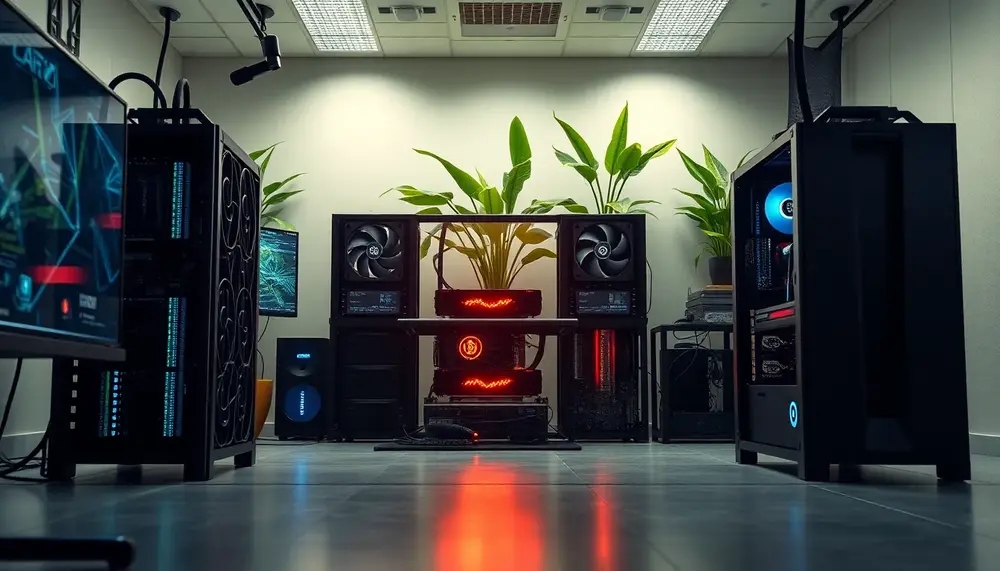Mining Yield
Mining Yield
Understanding the Concept of Mining Yield
When you delve into the world of Bitcoin mining, one term that you're likely to encounter often is mining yield. This concept is pivotal to understanding how Bitcoin mining works.
What Does Mining Yield Mean?
Mining Yield refers to the reward a miner receives for their contribution to the processing and verification of transactions on the Bitcoin network. A mine's yield is fundamentally its productive capability and indeed, the primary income source for Bitcoin miners.
Determining Factors of Mining Yield
No two mining yields are the same. It is essential to note multiple factors can influence the yield of your Bitcoin mining activities. These include the current price of Bitcoin, difficulty level of mining, efficiency of the mining equipment, and the total hashing power committed to the network. Learning how these factors interact can help optimize your mining yield.
Calculating Mining Yield
Calculating your potential mining yield is not as tough as it might seem. The two main factors to consider are your hardware's hash rate and the current mining difficulty. High-end mining hardware can produce more hashes per second, which increases the chances of successfully mining a block. However, as the difficulty increases, so does the number of hashes needed to mine a block, which can result in a decrease in your mining yield.
Boosting Your Mining Yield
Efficiency is key in Bitcoin mining. The more efficient your hardware and software, the higher your potential mining yield. Also, joining a mining pool can boost your chances of success. Furthermore, keep an eye on Bitcoin's price fluctuations, as these can impact the value of your yield.
Mining Yield: The Final Say
Understanding and monitoring the mining yield is imperative for every Bitcoin miner. Through prudent management and efficiency upgrades, miners can optimize their yield and make Bitcoin mining a rewarding venture. As always, proceed with caution and make decisions grounded in research.
Blog Posts with the term: Mining Yield

Kaspa mining offers the potential for profit through participation in a fast, scalable blockchain network by providing computational power to process transactions and secure the chain, with profitability depending on factors like GPU efficiency, electricity costs, and network hash rate....

Cloud mining allows individuals to participate in cryptocurrency mining without owning hardware by renting power from data centers, offering a simplified entry into digital investments. While it provides benefits like low entry barriers and ease of use, potential risks include...

Crypto mining yield refers to the amount of cryptocurrency earned through mining activities, influenced by factors like hash rate, network difficulty, block reward, electricity costs, and pool fees. To maximize yield, focus on selecting the right hardware (ASICs for Bitcoin...

Mining Digibyte (DGB) on your phone is an accessible way to get involved in cryptocurrency without significant upfront investment, requiring a modern smartphone, stable internet connection, secure wallet, mining app, and potentially joining a mining pool. Setting up involves choosing...

Bitcoin mining yield is influenced by factors such as electricity costs, initial hardware investment, network difficulty, Bitcoin price fluctuations, and pool fees; understanding these can help maximize profitability. Additionally, events like Bitcoin halving reduce block rewards but may increase value...

Ethereum mining yield refers to the amount of Ethereum a miner can earn, influenced by hardware efficiency, software settings, and network difficulty. To maximize profitability, miners should choose efficient hardware like GPUs or ASICs, optimize their mining software settings for...

Kaspa mining on laptops offers a way to engage with cryptocurrency without specialized hardware, though it's less efficient than using dedicated rigs. When choosing a laptop for Kaspa mining, prioritize a strong CPU, effective cooling system, sufficient RAM and SSD...

Infinity Hash uses waste heat from Bitcoin mining to sustainably heat greenhouses, cutting costs and offering investors fixed returns of around 25% per year....

